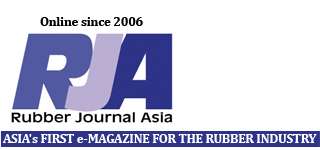A community in Oriental Mindoro is finding it profitable planting rubber trees. Farmer leader-entrepreneur Mitch Miciano started planting rubber trees in 2005 in Sitio Mahabang Parang, Barangay Malaya, Pinamalayan town. He first started on two hectares owned by his brother and followed up with another three hectares of his own land. Now the 700 rubber trees he planted is giving him income of at least P65,000 per month.
Miciano estimates that Mindoro Oriental, though not a traditional rubber area, has on hand 50 hectares that can be planted to rubber. This can easily expand to 400 hectares. Miciano said rubber is a good source of stable income. “Except for one to two months of rest, all the months of the year, rubber will give regular income,” Miciano said.
Department of Agriculture-Bureau of Agricultural Research (DA-BAR) director Nicomedes P. Eleazar said BAR continues to encourage farmers to plant rubber trees since demand is huge from China.
He said BAR is funding the implementation of a Research, Development and Extension project in rubber in Mindoro with the DA-MIMAROPA (Mindoro, Marinduque, Romblon, Palawan) Research Division.
BAR reported that prices have doubled for cup lump (or natural rubber) from P30 per kilo when Miciano started planting rubber in 2005 to P70 per kilo.
“Many people here are encouraged to plant rubber. One investor planted 8,000 seedlings on seven hectares. In due time, Mindoro can become like Mindanao,” he said.
But while the potential to create livelihood appears vast in this non-traditional rubber area, its success will largely depend on financing.
Production cost starts at P100,000 covering cost of seeds, fertilization, labor for clearing lands and planting and excludes the cash needs of farm families for their daily sustenance while waiting for the tree to produce latex.
It takes five years for a budded seedling to become ready for latex tapping.
The budded seedling costs P60 per piece excluding transportation cost from Zamboanga.
Miciano recalled than an investor who bought 8,000 seedlings spent P170,000 for transport.
Rudy Galang, BAR rubber specialist, said Land Bank finances rubber production.
Farmers need also to buy a processing facility that can produce higher-priced semi-finished products.
“Researchers of the University of Southern Mindanao in Kabacan, Cotabato led by Dr. Romulo L. Sena has developed a village-type processing facility costing P50,000 to P70,000 per unit,” Galang said. The machine transforms the latex into towel-like rubber sheets that are priced almost double from cup lumps.
Farmers will also need help in getting good price for their produce.
“In Mindanao, traders compete on offering a good price to farmers. Once our volume of production increases, traders will just come readily,” said Miciano.
From the plantation area alone, one job is created per hectare. The job potentials include tappers for the extraction of rubber latex from the trees; transporters; processing skilled labor and marketers.
“What you earn from rubber trees you cannot earn from coconut or any other trees,” Galang said.
Rubber price is foreseen to continue to rise in the world market.
“Even if you plant rubber in all farmlands of the Philippines, it will not be enough to supply the present demand,” said Miciano.
Trading of rubber in Mindanao has become profitable, according to Miciano.
“These traders are earning because they invested in buying rubber a long time ago. You don’t need government intervention anymore in the sale of rubber in Mindanao. It’s a well established rubber trading system.”
“Malaysia has become rich because of rubber because they planted it on all their mountains even in slopes, said Miciano, a former bank finance officer who turned to planting rubber.
Aside from being an industrial crop, rubber is considered an environment protection crop.
“Its roots grow laterally or sideways. It’s not deep rooted, and its benefit is that the top soil is maintained. It is an erosion-control tool,” said Miciano.
Rubber’s foliage is also expansive, so it absorbs carbon dioxide significantly, contributing to a reversal in the effects of global warming.
With this prospect, the Agricutural Training Institute (ATI) plans to put up a large-scale technology demonstration farm in Bansud, Oriental Mindoro, said Galang.
There are about 150,000 hectares of rubber land in the country.
“ Cooperatives will be given planting materials for a total of 40 hectares in Bansud,” said Galang.
Expansion of rubber plantations should enable Philippines to expand its market as the world demand for natural rubber was previously estimated to reach to 12.4 million metric tons (MT) by 2020.
Source: Malaya.com.ph
